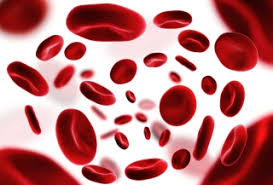Cardiology is typically a favorite topic for most students. The heart is one of the most revered organs and the majority of students are taught baseline information...
It's in Your Blood: Understanding Hematology on the MCAT
 In our last post on the Medical College Admissions Test (MCAT), we discussed the integration of endocrinology and physics in the cardiovascular system. This month we will dive in further and discuss the hematologic system that drives the cardiovascular system and how to apply concepts from genetics and chemistry.
In our last post on the Medical College Admissions Test (MCAT), we discussed the integration of endocrinology and physics in the cardiovascular system. This month we will dive in further and discuss the hematologic system that drives the cardiovascular system and how to apply concepts from genetics and chemistry.
In order to answer hematology questions on the MCAT, we first need to tackle the concept of what blood actually is and how we discern the different components.
When blood is drawn at your annual checkup, the phlebotomist or technician will place the blood into the centrifuge. The centrifuge will separate the blood into three layers based on density: plasma, white blood cells, and red blood cells. It is crucial to understand what is contained in each section of the blood in order to understand lab values and to answer some of those integrative chemistry concepts.
The plasma is the top layer, meaning it is the least dense.
The majority of plasma is composed of water. The remainder of plasma is composed of proteins such as albumin, antibodies, fibrinogen, and hormones. Albumin plays an important oncotic role in the vascular system by creating oncotic pressure that drives the movement of water into the vascular system. An important distinction is between that of serum and plasma; serum is plasma without fibrinogen and clotting factors.
Below the plasma layer is the white blood cell layer or the ‘buffy coat’.
This is where platelets and white blood cells are found. The bottom layer of the blood is the erythrocyte layer or red blood cells. The erythrocyte layer will contain hemoglobin, the transport binding protein for oxygen on red blood cells. From the erythrocyte layer we can determine the hematocrit percentage, which is a clinically important measure for determining the patient’s red blood cell production. Hematocrit is simply the volume taken up by red blood cells divided by the total blood volume. For example, a patient with polycythemia vera would have an abnormally high hematocrit because they overproduce red blood cells, while an anemic patient might have a relatively low or normal hematocrit due to low production of red blood cells. What hormone is responsible for this? Erythropoietin. What organ(s) if damaged could cause anemia due to lack of available erythropoietin? The kidneys. These are the types of integrative questions you can expect on your MCAT and testing yourself in a continual question basis is a good way to learn and build your understanding.
Now that we understand the components of hemoglobin, let’s talk about the primary function of red blood cells – gas exchange.
Red blood cells are often referred to as a ‘bag of hemoglobin’. This is because red blood cells lack organelles and a nucleus, and contain millions of hemoglobin proteins. Hemoglobin (Hb) is a unique protein. It has four subunits that each bind to oxygen. Hemoglobin is the quintessential example of cooperative binding, meaning that each subunit’s affinity for binding increases as other subunits become bound to oxygen. This gives the binding curve a sigmoidal shape (Check out MD Hero for more on this topic).
While the majority of oxygen moves through the blood bound to hemoglobin, it is noteworthy that a small percentage is simply dissolved in the blood. Gas exchange is blood is a highly integrative topic since it connects many organ systems including the cardiovascular and pulmonary systems.
As we discussed in last month’s blog, your cardiovascular system has a systemic and pulmonary circulation.
The pulmonary circulation allows the hemoglobin to pass through the lungs and bind oxygen (inhaled) and released carbon dioxide (exhaled). The pulmonary circulation then returns to the left side of the heart and is pumped to the systemic circulation. The body’s tissues need oxygen to drive their cellular respiration. For example, when you are at the gym doing squats you are utilizing a large amount of energy in the form of ATP. Replenishing your oxygen stores through circulation is essential for your body to continue to drive aerobic and anaerobic cellular respiration. In this area of the circulation, oxygen is released into the tissues and carbon dioxide is removed by hemoglobin on the red blood cells. This exchange is dependent on the partial pressures of each gas in the tissue.
In systemic circulation, the oxygen partial pressure is low and carbon dioxide partial pressure is high in the tissues. This drives the high concentration of oxygen in the blood to equilibrate and release oxygen and bind to carbon dioxide. The opposite occurs in gas exchange in the pulmonary circulation. As you develop your understanding of this concept, try to link it back to the oxygen-hemoglobin dissociation curve. Particularly high yield are understandings of acid-base, 2,3-bisphophoglyceric acid, and temperature. We will cover these and the bicarbonate buffer system in our next blog post.
As you delve into learning your organ systems and applying your basic science concepts to the MCAT, realize that these are the foundations of your clinical reasoning. While these concepts are challenging now, the depth of this material will be significantly greater in medical school. It will serve you well on both your MCAT and in your future as a student and physician to hone these concepts and integrate your learning.
About the Author
Jordan S. is a current medical student, and one of our most experienced MCAT tutors. Click here for more information.
